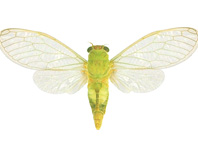Abstract
Vocalization is one of the main behaviors of anurans (Köhler et al. 2017). Calls emitted by these animals display several social and ecological functions. For example, they can be used for attraction of conspecific females (Toledo et al. 2015) and territorial defense (Wells 2010). Advertisement calls are emitted predominantly by males (Kelley 2004) and constitute a key-factor for species identification (Köhler et al. 2017).
References
Alvares, C.A., Stape, J.L., Sentelhas, P.C., de Moraes, G., Leonardo, J. & Sparovek, G. (2013) Köppen’s climate classification map for Brazil. Meteorologische Zeitschrift, 22, 711–728.
https://doi.org/10.1127/0941-2948/2013/0507
Ayres, M., Ayres Jr, M., Ayres, D. & Santos, A. (2007) Bioestat 5.0: Statistical applications in the areas of biological and medical sciences. Belém: Sociedade Civil Mamirauá, Brasília, CNPq, 339.
Bee, M.A., Kozich, C.E., Blackwell, K.J. & Gerhardt, H.C. (2001) Individual variation in advertisement calls of territorial male green frogs, Rana clamitans: implications for individual discrimination. Ethology, 107, 65–84.
https://doi.org/10.1046/j.1439-0310.2001.00640.x
Gerhardt, H.C. (1991) Female mate choice in treefrogs: static and dynamic acoustic criteria. Animal Behaviour, 42, 615–635.
https://doi.org/10.1016/S0003-3472(05)80245-3
Kelley, D.B. (2004) Vocal communication in frogs. Current Opinion in Neurobiology, 14, 751–757.
https://doi.org/10.1016/j.conb.2004.10.015
Lutz, B. (1973) Brazilian species of Hyla. University of Texas Press, Austin, Texas, 260 pp.
Márquez, R. & Eekhout, X.R. (2006) Advertisement calls of six species of anurans from Bali, Republic of Indonesia. Journal of Natural History, 40, 571–588.
https://doi.org/10.1080/00222930600712129
Morais, A.R., Batista, V.G., Gambale, P.G., Signorelli, L. & Bastos, R.P. (2012) Acoustic communication in a Neotropical frog (Dendropsophus minutus): vocal repertoire, variability and individual discrimination. The Herpetological Journal, 22, 249–257.
Murphy, C.G. & Gerhardt, H.C. (2002) Mate sampling by female barking treefrogs (Hyla gratiosa). Behavioral Ecology, 13, 472–480.
https://doi.org/10.1093/beheco/13.4.472
Nunes, I., Santiago, R.S. & Juncá, F.A. (2007) Advertisement calls of four hylid frogs from the state of Bahia, northeastern Brazil (Amphibia, Anura, Hylidae). South American Journal of Herpetology, 2, 89–97.
https://doi.org/10.2994/1808-9798(2007)2[89:ACOFHF]2.0.CO;2
Oitaven, L.P.C., Santos, J.R.O., Silva, A.O., Gamballe, P.G. & Moura, G.J.B. (2017) Description of vocalizations and analysis of variation intra and inter-individual of Pristimantis ramagii (Boulenger, 1888) in an upland swamp, Northeast Brazil. Herpetology Notes, 10, 197–203.
Köhler, J., Jansen, M., Rodríguez, A., Kok, P., Toledo, L.F., Emmrich, M., Glaw, F., Haddad, C., Rödel, M.O. & Vences, M. (2017) The use of bioacoustics in anuran taxonomy: theory, terminology, methods and recommendations for best practice. Zootaxa, 4251 (1), 1–124.
https://doi.org/10.11646/zootaxa.4251.1.1
Robisson, P., Aubin, T. & Bremond, J.C. (1993) Individuality in the voice of the emperor penguin Aptenodytes forsteri: adaptation to a noisy environment. Ethology, 94, 279–290.
https://doi.org/10.1111/j.1439-0310.1993.tb00445.x
Silva, R.A., Martins, I.A. & Rossa-Feres, D.D.C. (2008) Bioacoustics and calling site in anuran assemblages of open area in the northwest of São Paulo State, Brazil. Biota Neotropica, 8, 123–134.
https://doi.org/10.1590/S1676-06032008000300012
Signorelli, L., Morais, A.R., Vieira, R.R. & Bastos, R.P. (2016) Vocalizations of Hypsiboas goianus (Lutz, 1968) (Anura: Hylidae) in Central Brazil. Studies on Neotropical Fauna and Environment, 51, 188–196.
https://doi.org/10.1080/01650521.2016.1226314
Sueur, J., Aubin, T. & Simonis, C. (2008) seewave: a free modular tool for sound analysis and synthesis. Bioacoustics, 18, 213–226.
https://doi.org/10.1080/09524622.2008.9753600
Specht, R. (2002) Avisoft-saslab pro: sound analysis and synthesis laboratory. Avisoft Bioacoustics, Berlin, 2002, 1–723.
Sun, J.W. & Narins, P.M. (2005) Anthropogenic sounds differentially affect amphibian call rate. Biological conservation, 121, 419–427.
https://doi.org/10.1016/j.biocon.2004.05.017
Toledo, L.F., Martins, I.A., Bruschi, D.P., Passos, M.A., Alexandre, C. & Haddad, C.F. (2015) The anuran calling repertoire in the light of social context. Acta ethologica, 18, 87–99.
https://doi.org/10.1007/s10211-014-0194-4
Wells, K.D. (2010) The Ecology and Behavior of Amphibians. University of Chicago Press, Chicago, Illinois, 1148 pp.
Zar, J. (1999) Biostatistical Analysis. Prentice-Hall Inc., New Jersey, 663 pp.


